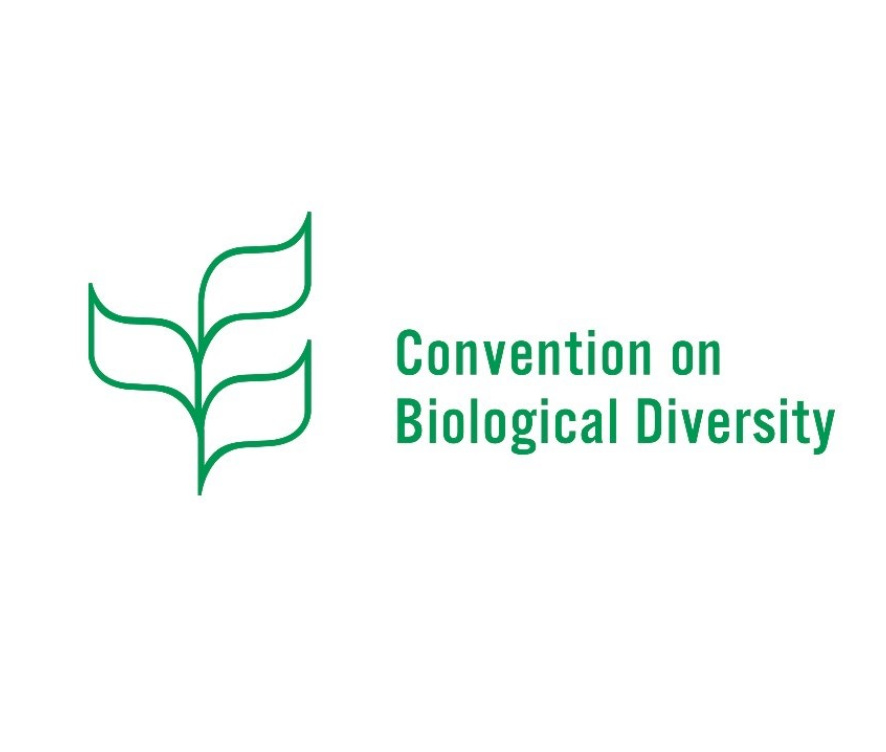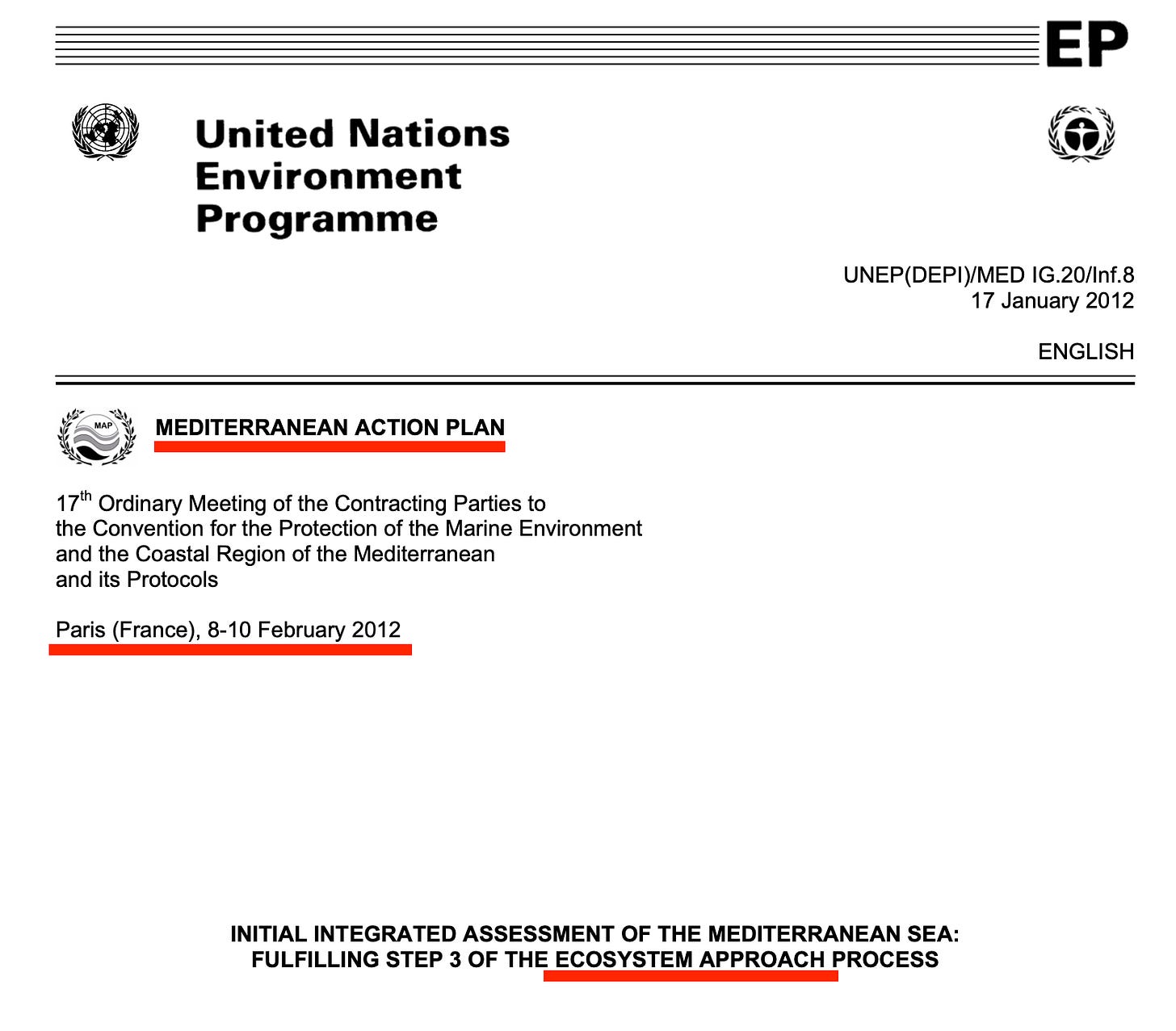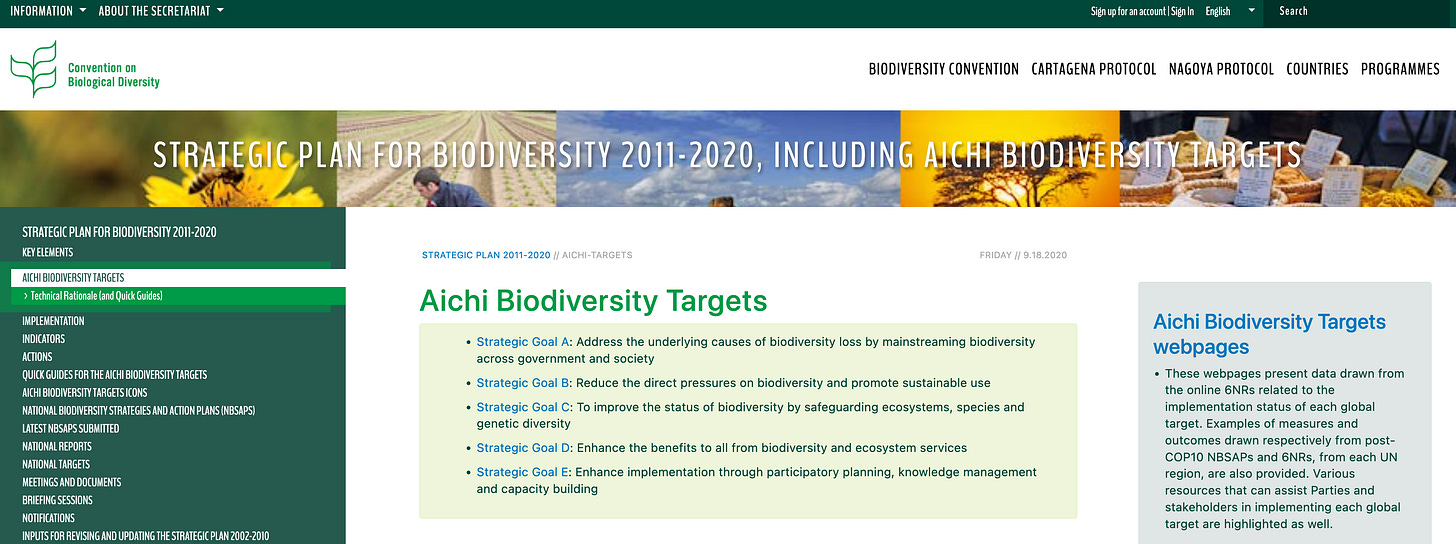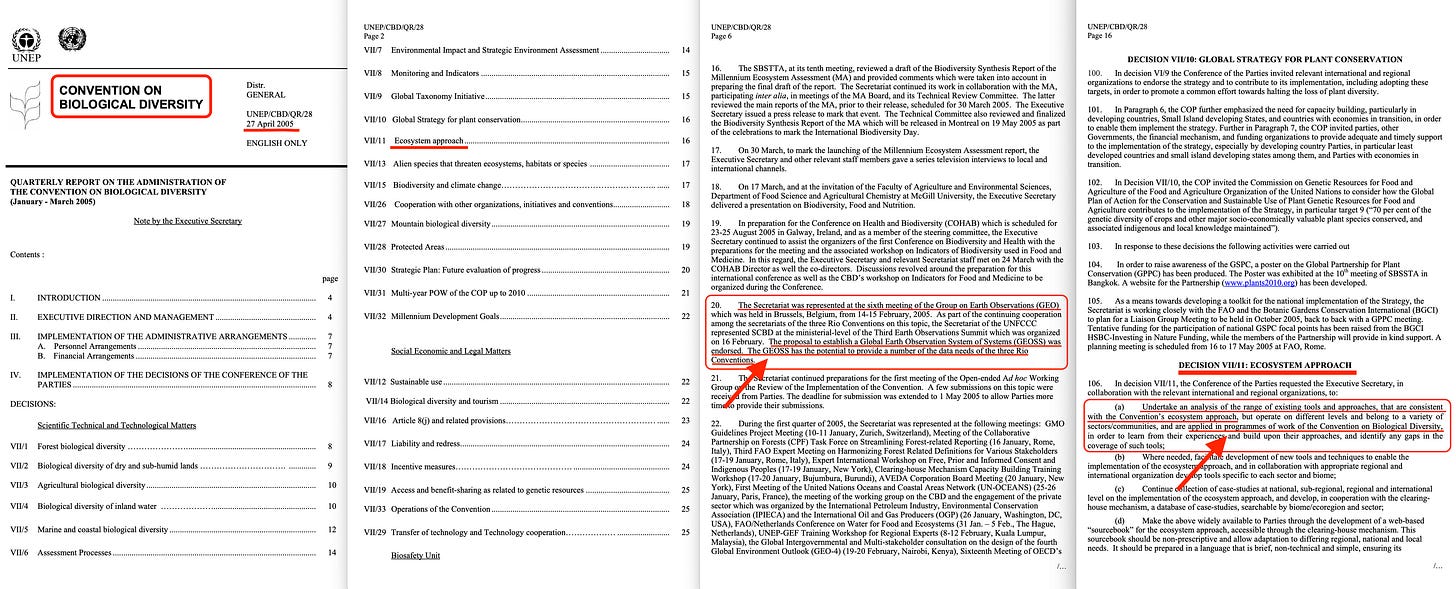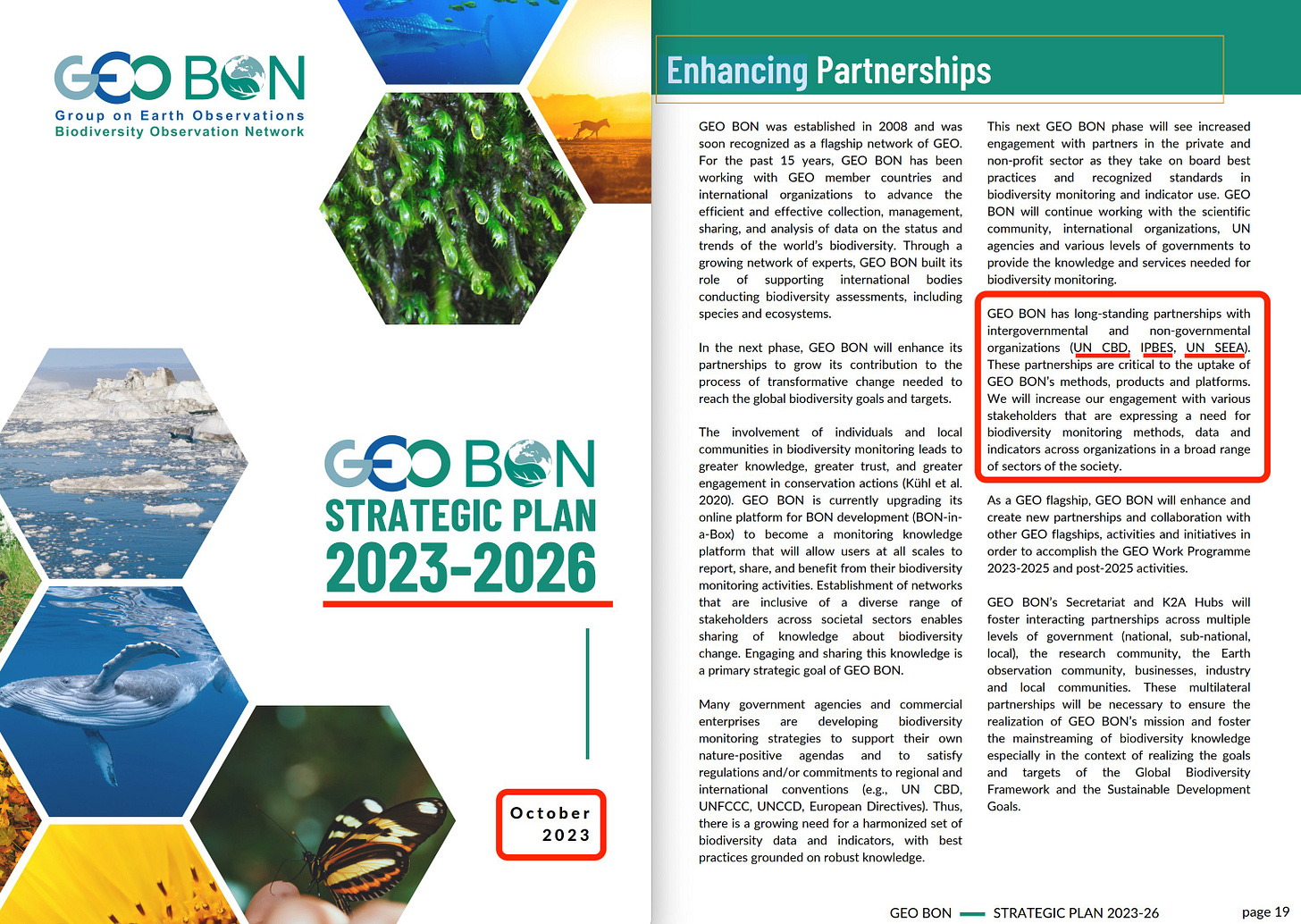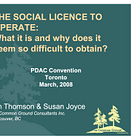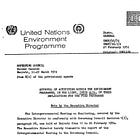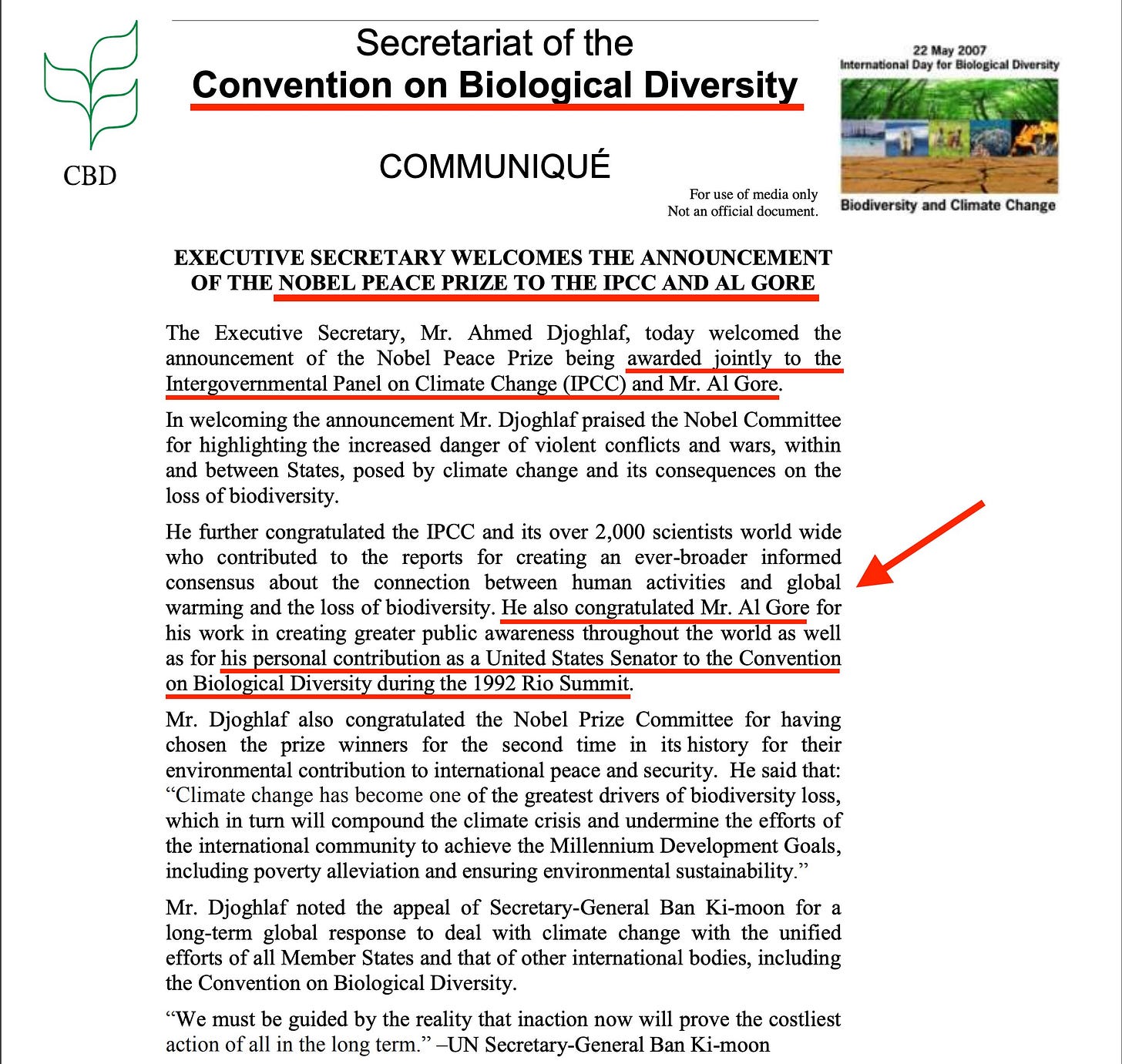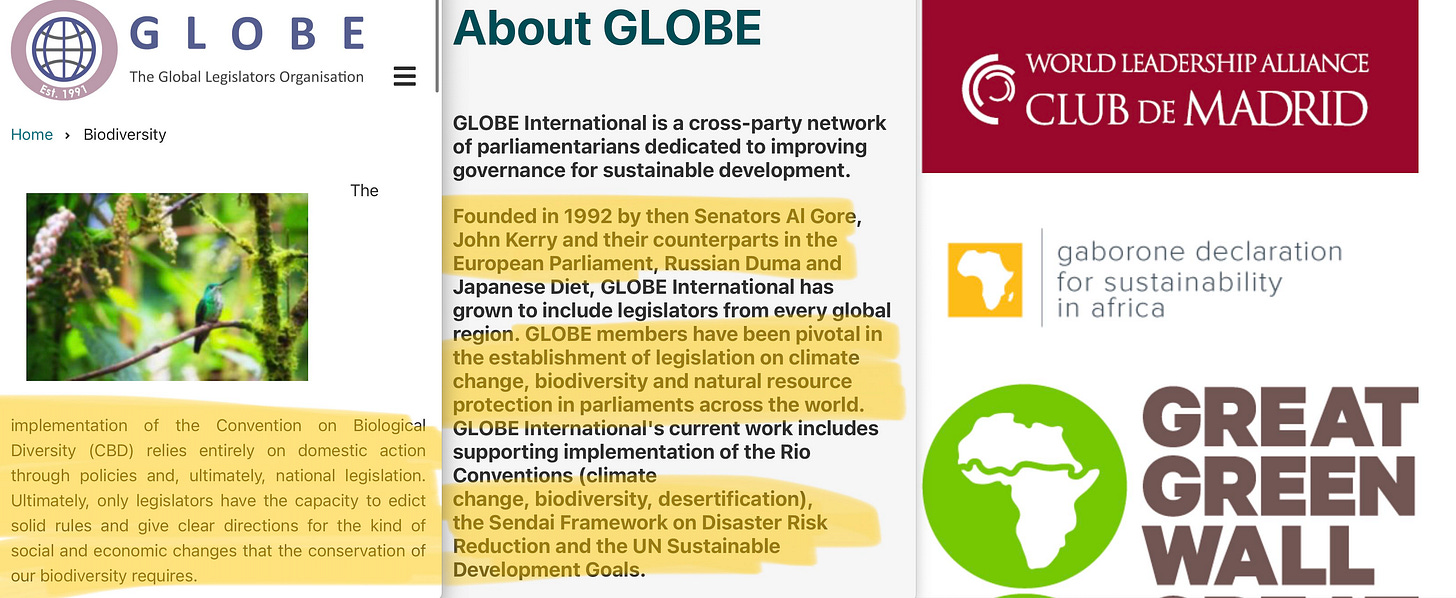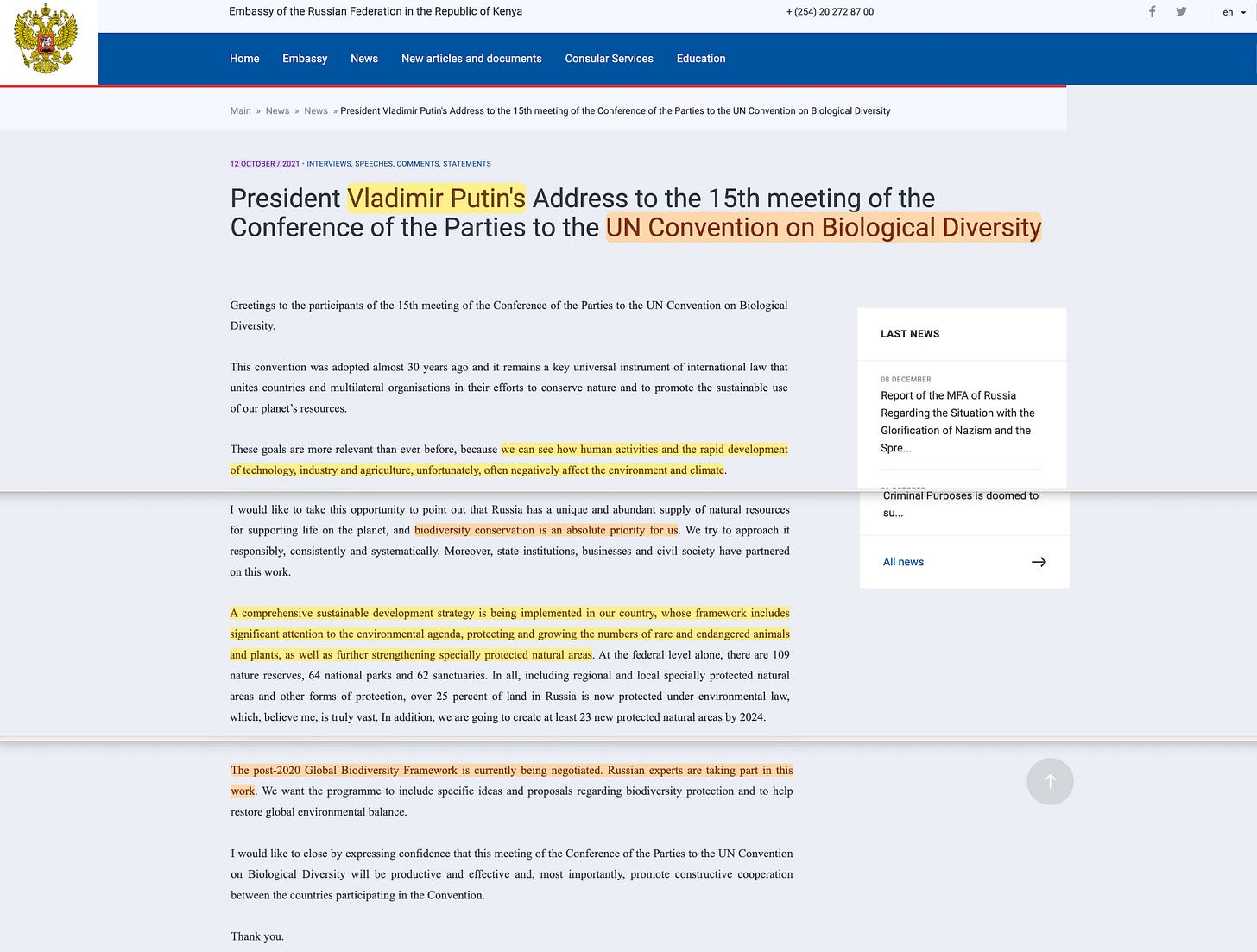The Convention on Biological Diversity
It's the eye of Sauron. And once you know for what to look - and hence pull at documents - the evidence just keeps falling down from the stacked shelves.
As I started writing this, one question that immediately popped up - where should I start this story?
And my decision fell an obscure document from 2004, titled ‘MAMFC - EVOLUTION TOWARDS AN ECOSYSTEM APPROACH TO FISHERIES (EAF)’
If you paid attention to my past articles, the Ecosystem Approach is a particularly heinous ideology, essentially promising to restore feudalism - but this time, guarded by global surveillance.
And perhaps that sounds alarmist, but it’s true.
See, the document starts off pretty aggressively -
‘The Mid-Atlantic Fishery Management Council (along with the three other Atlantic Councils) was tasked by Congress in the FY-2004 appropriations to incorporate ecosystem considerations into fisheries management.‘
Given the title of the document it should be fairly clear as to what this refers, but in case you seek confirmation -
‘There is a growing awareness that an ecosystem approach to fisheries (EAF) is important to the way we rethink fisheries management for the future.‘
So this was launched during George W Bush, under whom, the disastrous ‘PATRIOT Act’ was passed (in an epic 6 weeks, including drafting and debating). But I hear you say that it might be some other definition of ‘Ecosystem Approach’ to which he refers. But rather than establish clear cut equivalence, I’d prefer to show you a virtually undeniable link, sourcing page 4 of that same document -
‘A main conference panel composed of Council representatives from each region, NMFS officials, representatives from the Interstate Fisheries Commissions, US Coast Guard, NOAA General Counsel, State Department, and US Fish and Wildlife Service, deliberated the recommendations from three Advisory Panels…. The entirety of the Advisory Panel Report on Developing an Ecosystem Approach to Fisheries…
… an invitational only meeting with Admiral Lautenbacher in which the Admiral shared his desires for ecosystem based fisheries and his reorganization of NOAA to that end (January 2005)‘.
The question that immediately follows - who is Admiral Lautenbacher?
Well, here he is -
Setting aside his conflicting beliefs on climate change, he also led the Commerce delegation to the 2002 World Summit on Sustainable Development., which led to the 2003 Washington DC meet, the Earth Observation Summit.
Which is from where, ultimately, GEOSS was spawned.
And he followed up that initiative, by penning this paper in 2006 - on GEOSS.
In other words, the guy who in a private meeting in 2005 pushed for the Ecosystem Approach, also pushed the initiative for the ‘Global Earth Observation System of Systems’.
Golly, right?
In 2012, UNEP met in Paris, France, to discuss the Mediterranean Action Plan.
But although I could cover that document in detail, there’s one which is far more explosive, and from that same conference. Here it is -
‘Decision IG.20/4 - Implementing MAP ecosystem approach roadmap: Mediterranean Ecological and Operational Objectives, Indicators and Timetable for implementing the ecosystem approach roadmap‘
I quote -
‘Considering the initiatives undertaken within the framework of the General Fisheries Commission for the Mediterranean (GFCM) to develop principles for and implement the Ecosystem Approach to Fisheries (EAF);‘
EAF. Which, amazingly, was expressly discussed in the first document above.
‘Recalling also the four objectives of the Mediterranean Strategy for Sustainable Development and the UNEP/MAP Five Year Strategic Programme of Work adopted in Marrakech in 2009 that highlighted the ecosystem approach as the Programme’s overarching principle…‘
… and yes, it’s about the Ecosystem Approach. And from the ‘Decides’ section -
‘To re-affirm the commitment of the Contracting Parties to continue to apply the ecosystem based approach to the management of human activities while enabling a sustainable use of marine goods and services…‘
… just a minute ago it was about managing fisheries!
‘To request the Secretariat to:
1. Prepare an integrated monitoring programme based on the agreed ecosystem approach indicators…
6. Establish and make operational, through INFO/RAC, by 2013, at the latest, an information system to support the implementation of ecosystem approach and MAP integrated monitoring system;‘
And all of this details implementation of surveillance in the Mediterranean.
‘5. Work in 2012-2013, with SPA/RAC, with the national authorities and the relevant organisations to (i) evaluate the progress made so far in the implementation of the Strategic Action Programme for the conservation of Biodiversity in the Mediterranean (SAPBIO) adopted by the 13th Meeting of the Contracting Parties (Catania, 2003); (ii) to define the orientations of SAPBIO at national and regional levels for the coming years, in accordance with the Mediterranean Ecological Objectives and the Aichi targets; and, (iii) to investigate options for ensuring appropriate financial support for the implementation of SAPBIO at national and regional levels;‘
And there’s the driver - biodiversity conservation. And the Aichi Targets? Here they are, courtesy of the Convention on Biological Diversity.
Still not convinced? OK, well, let’s zip back to 2005, and a document penned by the CBD themselves.
‘QUARTERLY REPORT ON THE ADMINISTRATION OF THE CONVENTION ON BIOLOGICAL DIVERSITY‘
Page 6, item 20 -
‘20. The Secretariat was represented at the sixth meeting of the Group on Earth Observations (GEO) which was held in Brussels, Belgium, from 14-15 February, 2005. As part of the continuing cooperation among the secretariats of the three Rio Conventions on this topic, the Secretariat of the UNFCCC represented SCBD at the ministerial-level of the Third Earth Observations Summit which was organized on 16 February. The proposal to establish a Global Earth Observation System of Systems (GEOSS) was endorsed. The GEOSS has the potential to provide a number of the data needs of the three Rio Conventions.‘
One of those three, of course, is the Convention on Biological Diversity.
We continue on page 16 -
‘DECISION VII/11: ECOSYSTEM APPROACH
106. In decision VII/11, the Conference of the Parties requested the Executive Secretary, in collaboration with the relevant international and regional organizations, to:
(a) Undertake an analysis of the range of existing tools and approaches, that are consistent with the Convention’s ecosystem approach, but operate on different levels and belong to a variety of sectors/communities, and are applied in programmes of work of the Convention on Biological Diversity, in order to learn from their experiences and build upon their approaches, and identify any gaps in the coverage of such tools;‘
Any questions? I thought not.
In other words, there we have proof - sourced via the CBD themselves - that GEOSS indicators will be used as data input for the successful implementation of the Convention on Biological Diversity.
But we’re really not done. We are really not done. 2010 is up next via this document, also on CBD’s site -
‘GROUP ON EARTH OBSERVATIONS BIODIVERSITY OBSERVATION NETWORK (GEO BON) – SUMMARY OF THE IMPLEMENTATION PLANS‘
'GEO BON is a specific example of a ‘community of practice within the Global Earth Observation System of Systems (GEOSS). It is the main implementation platform of the Biodiversity ‘Societal Benefit Area’.'
‘The guiding principles on which GEO BON is based are listed in the Concept Document [CD 1.4.1]. They derive from the GEOSS principles, and include issues such as information sharing, interoperability, standards, user-orientation and scientific rigor. The ‘value proposition’ of GEO BON is to build on, coordinate and link existing major initiatives working with biodiversity data and information, in order to derive higher-level ‘value-added’ analytical products not currently available through the existing activities when considered separately. It aims to provide a global, scientificallyrobust framework for observations that can detect biodiversity change; provide access to observations, …‘
But the most worrying aspect continues on page 4 -
‘The main users of GEO BON will be countries (especially in relation to their obligations under biodiversity-related conventions); national natural resource and biodiversity conservation agencies; international organisations and the biodiversity-relevant treaty bodies; non-governmental organisations (both national and international) in the fields of biodiversity protection and natural resource management; and scientific research organisations and individuals both in and out of academia.‘
Who are those individuals?
Who?
Now, GEOBON have their own website, which you can find over here.
'GEO BON is a flagship of GEO'
On their page, they have a Strategic Plan 2023-26 from October, 2023, which you can find here. It’s not particularly revelatory; it’s too early in the day for them to roll out the full set of indicators. It would give it away.
However, they do cast light upon a few items of interest here, including their partnerships with CBD (of which we already know), IPBES, and UN SEEA....
The IPBES can be located here; they are the ‘Intergovernmental Science-Policy Platform on Biodiversity and Ecosystem Services‘ - clearly there to fabricate the science, though I would expect ‘SCOPE’ to share that responsibility.
The UN SEEA can be found over here. They are there to ensure that your business eventually fails the Social License to Operate, on account of some arbitrary ESG value you allegedly failed to live up to (in spite of spending plenty attempting to).
But let’s quickly return to the Strategic Plan above, because we also find this - GBios, which appear to be where all the GEO BON (and partner) data ends up.
I include this here, because I was wrong in my assumption that this would become the main initiative in terms of public health surveillance - however, when I sent through Google, I found a very clear next link…
Unfortunately, the document was now gone from the GEOSS site (though the gooel cache had not yet reflected this, hence, it must have taken place very, very recently), and it’s just unbelievably messed up. It’s not as bad as I expected, …
… it’s much, much worse.
Here’s the document in question. It’s the 2023-2025 GEO Work Programme, and not only does it deliver in terms of public health surveillance, it in fact has a different initiative, ‘EO4HEALTH’, which states -
‘As a GEO Initiative, EO4HEALTH helps foster the development of integrated information systems that improve the capacity to predict, respond to, and reduce environment-related health risks. These systems combine EO monitoring and prediction; social, demographic, and health information; interdisciplinary research; application and assessment; communication; education; and training to enhance preparedness and resilience. EO4HEALTH represents a particular element of the larger GEO Health Community of Practice (CoP), offering support to the GEO Health CoP in the development and elaboration of the CoP Work Plan and five work groups: 1) heat; 2) infectious diseases; 3) ….‘
So, yeah, health, infectious diseases, predict, respond and so forth. And just to hammer home -
‘These data can also support disease preparedness and response actions in disease epidemic or humanitarian efforts.‘
And to follow up on that, here’s another document on the state of implementation -
‘The EO4Health and GEO Health CoP were strategically placed at the start of the COVID-19 pandemic to offer a platform for GEO members worldwide to share research applications and related activities that use Earth observations to advance knowledge on COVID-19 transmission.‘
Which means it was active by 2020. And then - ‘Please describe the key changes proposed for the 2023-2025 period, for example, new projects, new areas of focus, or adjustments to the activity governance.‘ goes on to detail ‘new initiatives’ such as an early warning system for malaria, and a geospatial surveillance system for vector-borne disease.
Did you vote for this?
Did anyone?
But wait - there’s more! We return to the GEO Work Programme 2023-25 to find this on page 40 -
‘HUMAN-PLANET aims to measure, monitor and assess human presence on planet Earth and in doing so help to address hazard impact on society, societal demand for resources and societal impact on the environment.‘
What do you reckon will happen if you’re found to be a burden upon ‘Mother Earth’? But of further interest is this -
‘Physical size of human settlements (built-up) and population density spatial grids are the foundation variables produced by HUMAN-PLANET and available over time dating back to 1975‘
And what took place in 1975 again? Oh yeah, ANOTHER EXTRAORDINARY COINCIDENCE.
And though I could go on with these examples, showing you exactly for what all this global surveillance data will be used, I will show you just one more, page 67 -
‘The widespread adoption of mobile devices and social media platforms, coupled with the development of low-cost sensors, has made it easier for the public to contribute to and engage in scientific and engineering research and monitoring‘
You reckon they were told about their ‘contributions’?
‘Governmental entities and organizations around the globe are supporting the development and integration of new sources of in-situ Earth observations data collection at local, regional, and global scales through citizen science observatories and projects.‘
No, probably not. Unless, of course, you genuinely think those ‘organisations’ of which some are ‘social media platforms’ isn’t Facebook.
Words really do fail me here, because this is just such epic, gross violations of privacy, and at no time did the politicians ever ask, or even inform in this regard.
And that’s in spite of setting up ‘information clearinghouses’ - such as INFOTERRA in the past - which… obviously ensure that both you and the ‘policymaker’ have the ‘correct’ information.
No, you can rest assured that all information cleared will be kind to the narrative.
But not so much you.
-
It’s at this stage I would normally wrap things up. But I made more seriously disturbing discoveries today, which really do need to be shared.
First off, the Convention on Biological Diversity openly cooperate with the World Health Organisation, and the Lancet-Rockefeller Planetary Health initiative. Here’s a document from 2015 which couldn’t be more explicit even if they tried.
And in 2017, this document was released, courtesy of the CBD.
One Health, CBD, social justice, ecosystem approach, and Planetary Health. All on the first two pages. Sure is one crowded tree they all sit in.
And though it’s not exactly a secret that Al Gore was very much supporting the CBD back in the day…
… what also took place in 1992 was the launch of GLOBE, again courtesy of Al Gore and John Kerry. Oh yeah, and a bunch of members of the Duma.
And partnered with… the Club of Madrid.
And the Global Environment Facility.
And the Convention on Biological Diversity.
Speaking of Russia, you know who else is signed up in terms of the Convention on Biological Diversity? In fact, he delivered a speech in October, 2021…
… and in that regard, I invite anyone to find either Trump or Elon Musk in there.
Musk would make sense, because of SpaceX, but I haven’t found him in anything incriminating. Not on Google, Yandex, or even Baidu.
As for Trump… he defunded UNESCO (who launched that 1969 report on Planetary Management), and the WHO in April, 2020. That, too, was one of those occasions where Peter Piot found the energy to object, in spite of allegedly being near death with covid-19.
If you find anything incriminating on either, please do share.




